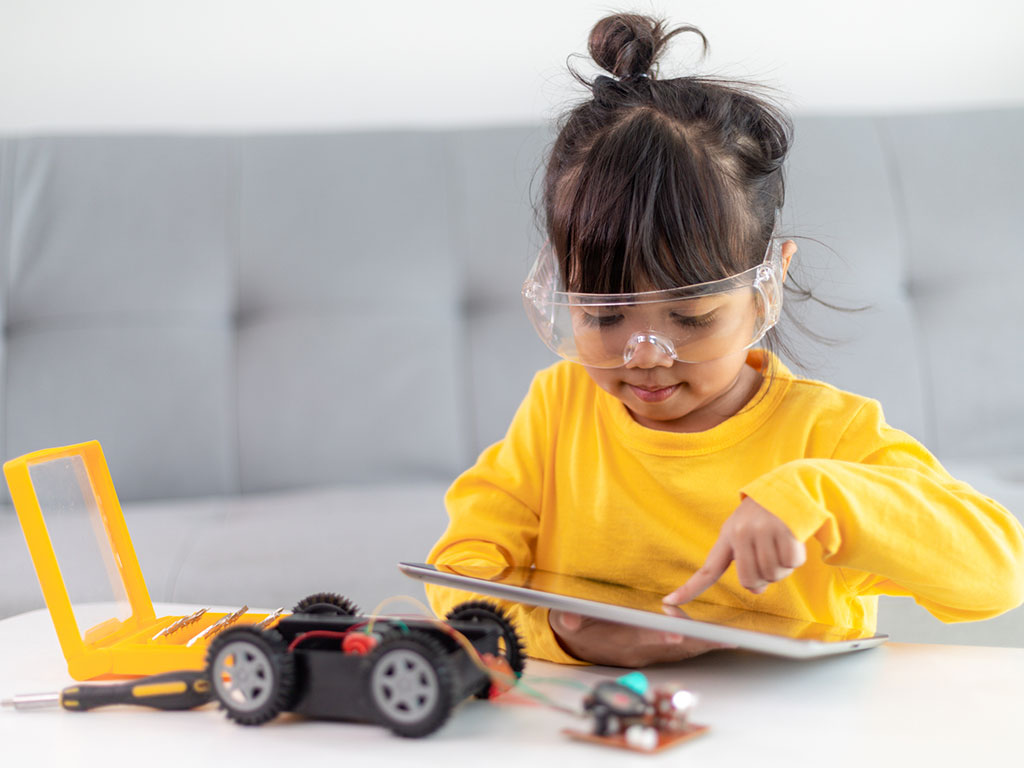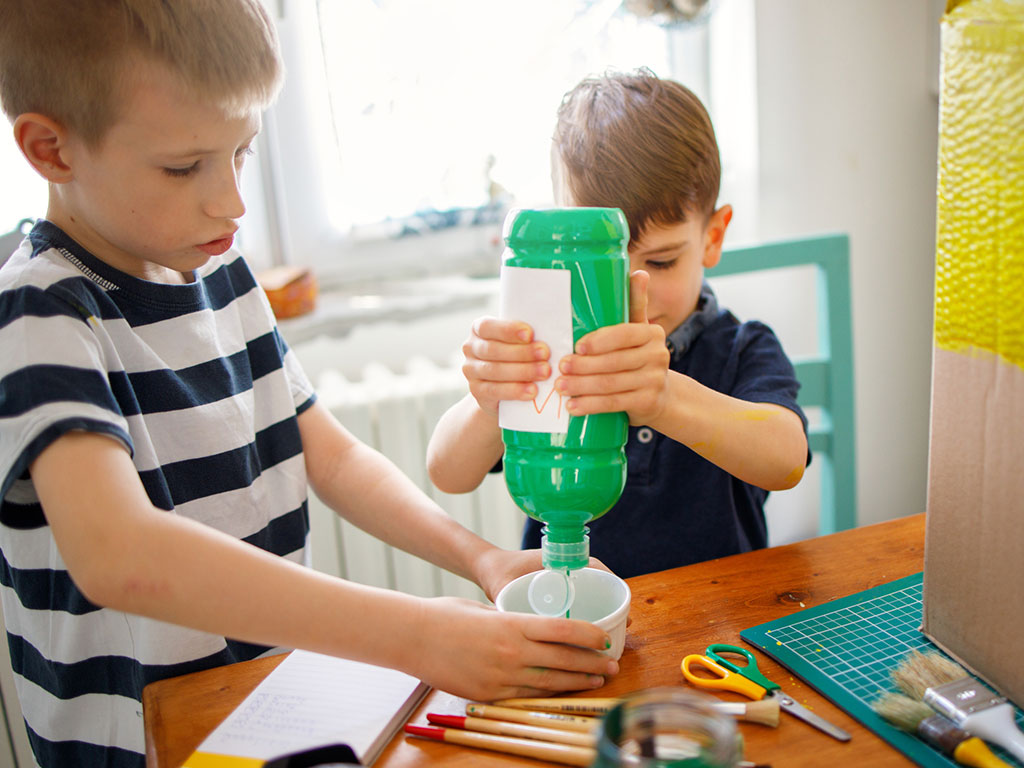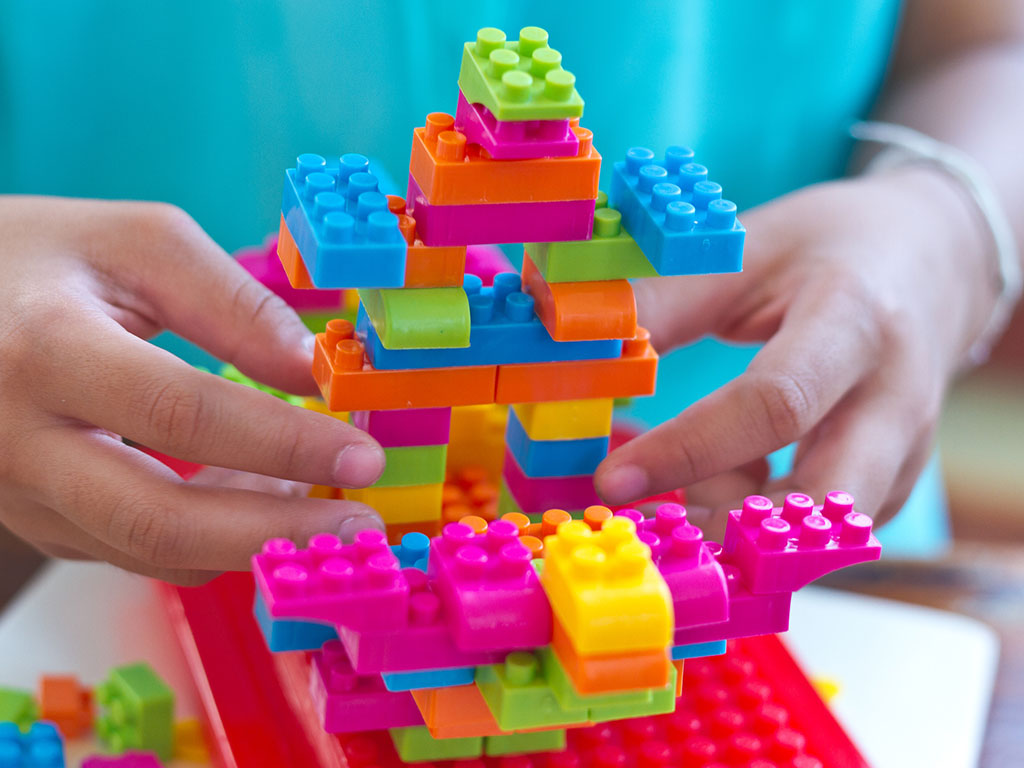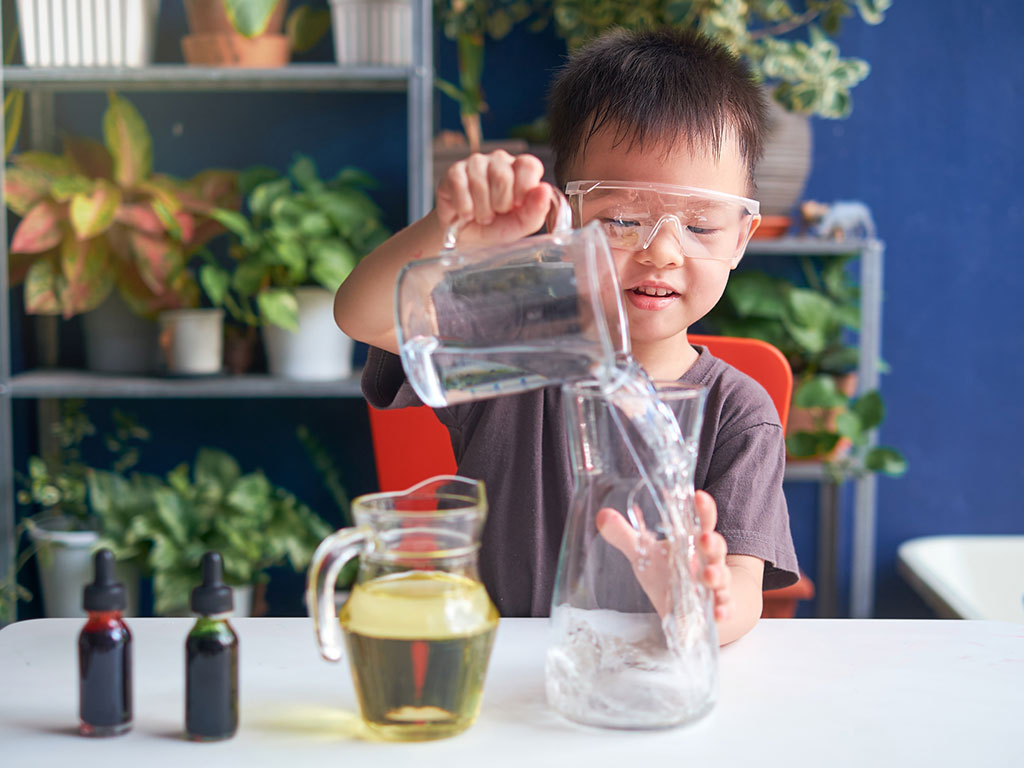by Janeen Lewis
STEAM (Science, Technology Engineering, Arts and Math) has grown in popularity in recent years as a way to educate children for the 21st Century. It’s a common acronym to reference these important subjects and skills, in and out of school. STEAM activities, unlike traditional STEM activities, focus on exploring the fields of science and mathematics while using inventive problem-solving techniques from more creative fields like the arts. STEAM programs have been adopted in many schools, and the future will include STEAM-related jobs. Foster a love of STEAM at home with these fun and easy ideas.
Science
Children are naturally inquisitive, and curiosity is the backbone of science discovery. Inspire your child to dive into science by giving them a scientific start. Try using scientific words and make exploring a part of everyday life. Ask simple questions like “Why is the sky blue?” even if you don’t know the answer! Questioning is just the first step of the Scientific Method.
Encourage household problem-solving, such as bread dough that doesn’t rise, a flat bicycle tire after weather changes, or an insect infestation in the garden. These questions are gateways to hypotheses, experiments and answers.
Create a kitchen or backyard science lab with common ingredients. Have a blast – literally! Many safe experiments involve things that erupt. Make a paper mache baking soda and vinegar volcano or go outside and drop a pack of Mentos in a 2-liter soda, and then discuss the science behind the blast. Or try something easier like making homemade ice cream in a Ziploc bag, making butter out of heavy cream in a mason jar, or growing geodes in eggshells.
Relate science to their specific interests. Learn the physics behind the fastball or discuss how a gymnast balances on a beam. Finding the answers to these questions not only encourages critical thinking but can also improve your child’s skills for their extra-curricular hobbies.

Technology
Most parents set screen time boundaries, but kids love devices and future jobs will require skills in technology. While excessive screen time can have negative effects, it’s important to acknowledge the benefits of screen time when it comes to building technology skills.
Ensure that your child’s relationship with technology is a healthy one. Researching topics is an essential part of any school project, and being able to navigate the internet and use search engines effectively can make the task much easier and more efficient.
Creating brochures and other visual aids can help your child communicate their ideas more effectively and creatively. This can be especially useful when presenting information to classmates or teachers. Using spreadsheets for chores and allowance can help your child develop good financial habits and organizational skills.
When you take a family trip, letting your child research places to visit can be a fun and educational experience for everyone. They can learn about different cultures, historical sites, and natural wonders, and share their findings with the family.
Use digital tools and explore study aid apps to help with schoolwork, such as Dictionary.com, Thesaurus.com, KhanAcademy.com, and apps such as Tinycards, myHomework, and My GradeBook. Also, start coding early. Check out Code.org for fun ways kids can code online or without technology. Other coding sites to try are CodeAcademy, Kodable, Lightbot, Scratch, and Tynker.
By teaching your child how to use computers and digital tools in these ways, you’re setting them up for success and helping them become confident and capable learners.

Engineering
Does your child love Lego blocks or Minecraft? Does she want to take apart the toaster or fix the cell phone when it breaks? There are many ways to inspire and motivate a budding engineer. Start by teaching your child the Engineering Design Process (Check out a kid-friendly version at TeachEngineering.org).
Keep building supplies on hand. Try Legos, Brain Flakes, magnetic tiles, wooden blocks, K’nex, Lincoln Logs, Tinker Toys and Duplo bricks. Also keep recyclables like cardboard, paper towel tubes and cereal boxes. There are even edible options like cheese, grapes and marshmallows. Pair one of these with toothpicks or pretzels for building.
Encouraging children to participate in hands-on activities will help develop practical skills and gain real-world experience. Try tower building challenges, create catapults, or build a miniature roller coaster. Watch your child take their creativity for a ride!

Arts
A well-rounded education that incorporates STEM and the arts is important for inspiring creativity and exploration in early education. Children can be artists by painting, drawing, sculpting, singing, playing an instrument, dancing or writing. Take note of inclinations in these areas and foster a love of the arts.
Inspire creativity by immersing your home in different types of art. Listen to a variety of music genres, check out art books from the library, and stock up on art supplies. Watercolors, finger paints, crayons, colored pencils, pastels, construction paper, sketch books and origami paper are some examples.
Even if you don’t think you’re good at art, experiment with various art mediums along with your child. He or she will be more willing to try, too. Try evaporation art by mixing salt with water and paint and have them predict what will happen. Or try sculpting with air-dry clay; your child doesn’t even need a pottery wheel to create with clay!
Music also provides an amazing opportunity to learn more about science, technology and math. Your child can explore the physics of sound and musical instruments by creating their own rhythms, testing sound with spoons, seeing sound waves with salt, amping up their ear power with paper, and so much more!

Math
There are many ways to make math relevant and interesting. Research shows that most children can succeed at math with patience and practice. STEAM activities should incorporate math with hands-on creativity for a more engaging and memorable learning experience.
Teach number sense by mentally working through problem-solving logic with your child. Bedtime Math: A Fun Excuse to Stay Up Late by Laura Overdeck is an enjoyable book for promoting math discussions. Search for Texas Instruments’ “STEM Behind Cool Careers” on Google for videos connecting algebra, geometry and physics to jobs like fashion design, flying jets and more.
Start teaching math early by cooking or baking together. Measuring, equivalent fractions, and conversions are all part of recipe building. Try “grocery math” by asking them to weigh enough produce without going over a dollar amount, compare prices for the best buys, and stay within a weekly budget. Also, assign chores and give an allowance, even if it is a very small amount. They’ll be asking for ice cream and movie money anyway, so why not teach practical budgeting skills in the process?
STEAM is all about mixing the left brain and right brain, making the study of math and science more visual and creative. These do-it-yourself STEAM activities and experiences will help your child grow up to be capable, independent, and intellectually curious students.
STEAM Supplies
Keep these materials on hand for experiments and STEAM projects:
- Cardboard
- Paper towel and toilet paper tubes
- Straws
- Aluminum foil
- Empty water bottles
- Plastic lids
- Beakers or jars with lids
- Funnels
- Tongs
- Epsom salt
- Rock salt
- Alum
- Baking soda
- Vinegar
- Food coloring
- Marbles
- Potting soil





